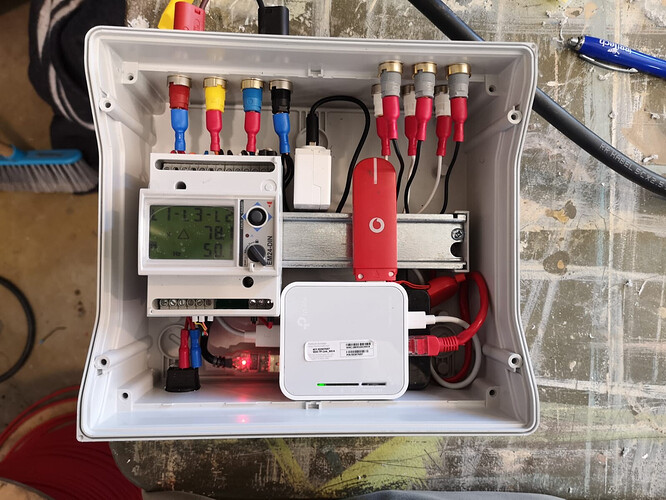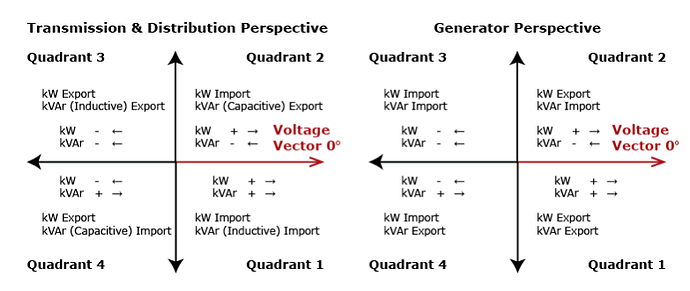Hey @warwickchapman , I have an interesting conundrum here. Don’t take this as a commitment to do it, but I did make a quick attempt.
The issue is that the meters don’t appear to agree. The ET112 and the ET340 agree that my laptop has a positive power factor of around 0.5. The measurement isn’t terribly accurate, the one says 0.55 and the other 0.45.
The EM24 however says it has a negative power factor, -0.5. So at least it agrees roughly about the poor power factor of the PSU brick, but not about the direction.
What confuses me further, is that I have the meters wired up such that L1 loops backwards through L2, so that L2 literally reflects the same values as L1, but the negative thereof. I would have expected the PF on L2 to be the reverse of L1 (since the current is exactly 180 degrees out of phase), but I cannot seem to get that result on any of the two 3-phase meters (EM24, ET340).
So I am not quite sure what to make of it… do these meters have different interpretations of what is positive and negative? The documentation does not seem to suggest that that is the case. The EM24 insists that my load on L1 is capacitive, so negative would be the right answer.
Perhaps the laptop brick has a non-linear current waveform that simply confuses the heck out of it?
Or perhaps I seriously misunderstand how it works 
In any case, as a result of this weirdness, and because I don’t really have anything better to calibrate against, I do not know how useful the result is. If you have access to two different meters and can verify the results, I can send you a binary for whatever platform you prefer.
I’m also wondering it if might not be better to rather publish the apparent power figures. That would at least bring it in line with the Multi, which publishes /S figures.
 !
!



